Similar presentations:
Literature Review
1.
Literature ReviewDENG782 Research ethics and methods
Dr. Assiya Yermukhambetova
2.
• In your group please discuss limitations of firstfour research databases.
• 1. What is the difference of pre-print and peer
reviewed article? Can you use only one database
or you prefer to use mutliple databases? Please
make notes on the limitations/advantages of using
a particular database. You may want to add
subject-specific one instead of the other listed in
this file.
• 2. Do you have any particular literature search
strategy? Please share and discuss in your group.
Please provide bullet points of your strategy.
3.
Goals of the Workshops• To help you understand the purpose and basic
requirements of an effective literature review.
• To help you critically assess research
materials.
• To develop strategies for inventing, organizing,
and drafting a literature review.
• To help you cite sources appropriately.
4.
What is LR?• A literature review discusses published
information in a particular subject area, and
sometimes information in a particular subject
area within a certain time period.
• A literature review can be just a simple summary
of the sources, but it usually has an
organizational pattern and combines both
summary and synthesis.
4
5.
Purpose of a Literature ReviewThe literature review is a critical look at the
existing research that is significant to the work
that you are carrying out.
To provide background information
To establish importance
To demonstrate familiarity
To “carve out a space” for further research
6.
What is LR?• The format of a review of literature may vary from
discipline to discipline and from assignment to
assignment.
• A review may be a self-contained unit -- an end in itself - or a preface to and rationale for engaging in primary
research. A review is a required part of grant and
research proposals and often a chapter in theses and
dissertations.
• Generally, the purpose of a review is to analyze critically
a segment of a published body of knowledge through
summary, classification, and comparison of prior
research studies, reviews of literature, and theoretical
articles.
6
7.
Characteristics ofEffective Literature Reviews
• Outlining important research trends
• Assessing the strengths and weaknesses of
existing research
• Identifying potential gaps in knowledge
• Establishing a need for current and/or future
research projects
8.
Steps for Writing a Lit ReviewPlanning
Reading and Research
Analyzing
Drafting
Revising
9.
PlanningWhat Type of Literature Review
Am I Writing?
10.
Planning• Focus
– What is the specific thesis, problem, or research
question that my literature review helps to define?
– Identifying a focus that allows you to:
• Sort and categorize information
• Eliminate irrelevant information
• Type
– What type of literature review am I conducting?
– Theory; Methodology; Policy; Quantitative;
Qualitative
11.
Planning• Scope
– What is the scope of my literature review?
– What types of sources am I using?
• Academic Discipline
– What field(s) am I working in?
12.
ReflectionTake a moment to answer each of the questions
in the “Planning” section of your packet about
a literature review you are currently working
on or plan to work on.
• How many of the questions could you answer?
• What questions did this short exercise raise for
you?
13.
What should I do before writing theliterature review?
• Clarify
– If your assignment is not very specific, seek clarification
from your supervisor/lecturer:
– Roughly how many sources should you include?
– What types of sources (books, journal articles, websites)?
– Should you summarize, synthesize, or critique your
sources by discussing a common theme or issue?
– Should you evaluate your sources?
– Should you provide subheadings and other background
information, such as definitions and/or a history?
13
14.
What should I do before writing theliterature review?
• Find models
– Look for other literature reviews in your area of interest or
in the discipline and read them to get a sense of the types
of themes you might want to look for in your own research
or ways to organize your final review. You can simply put
the word "review" in your search engine along with your
other topic terms to find articles of this type on the Internet
or in an electronic database. The bibliography or reference
section of sources you've already read are also excellent
entry points into your own research.
14
15.
What should I do before writing theliterature review?
• Narrow your topic
– There are hundreds or even thousands of
articles and books on most areas of study.
The narrower your topic, the easier it will be to
limit the number of sources you need to read
in order to get a good survey of the material.
Your instructor will probably not expect you to
read everything that's out there on the topic,
but you'll make your job easier if you first limit
your scope.
15
16.
What should I do before writing theliterature review?
• Consider whether your sources are
current
– Some disciplines require that you use
information that is as current as possible. In
the sciences, for instance, treatments for
medical problems are constantly changing
according to the latest studies. Information
even two years old could be obsolete.
16
17.
What should I do before writing theliterature review?
• Find a focus
– A literature review, like a term paper, is
usually organized around ideas, not the
sources themselves as an annotated
bibliography would be organized. This means
that you will not just simply list your sources
and go into detail about each one of them,
one at a time.
17
18.
What should I do before writing theliterature review?
– As you read widely but selectively in your topic area,
consider instead what themes or issues connect your
sources together.
– Do they present one or different solutions?
– Is there an aspect of the field that is missing?
– How well do they present the material and do they portray
it according to an appropriate theory?
– Do they reveal a trend in the field?
– A raging debate?
– Pick one of these themes to focus the organization of your
review.
18
19.
What should I do before writing theliterature review?
• Construct a working thesis statement
– Use the focus you've found to construct a
thesis statement. Literature reviews have
thesis statements as well! However, your
thesis statement will not necessarily argue for
a position or an opinion; rather it will argue for
a particular perspective on the material.
19
20.
What should I do before writing theliterature review?
• Some sample thesis statements for
literature reviews are as follows:
– The current trend in treatment for congestive
heart failure combines surgery and medicine.
– More and more cultural studies scholars are
accepting popular media as a subject worthy
of academic consideration.
20
21.
What should I do before writing theliterature review?
• Consider organization
– You've got a focus, and you've narrowed it
down to a thesis statement.
– Now what is the most effective way of
presenting the information?
– What are the most important topics,
subtopics, etc., that your review needs to
include?
– And in what order should you present them?
HOMEWORK!!!
21
22.
What should I do before writing theliterature review?
• Develop an organization for your review at both a
global and local level:
• First, cover the basic categories
– Just like most academic papers, literature reviews also
must contain at least three basic elements: an introduction
or background information section; the body of the review
containing the discussion of sources; and, finally, a
conclusion and/or recommendations section to end the
paper.
22
23.
What should I do before writing theliterature review?
• Introduction: Gives a quick idea of the topic of the
literature review, such as the central theme or
organizational pattern.
• Body: Contains your discussion of sources and is
organized either chronologically, thematically, or
methodologically (see below for more information on
each).
• Conclusions/Recommendations: Discuss what you
have drawn from reviewing literature so far. Where
might the discussion proceed?
23
24.
What should I do before writing theliterature review?
• Organizing the body
– Once you have the basic categories in place, then you must
consider how you will present the sources themselves within the
body of your paper. Create an organizational method to focus
this section even further.
– To help you come up with an overall organizational framework
for your review, consider the six typical ways of organizing the
sources into a review:
Chronological
By publication
By trend
Thematic
Methodological
Questions for Further Research
24
25.
What should I do before writing theliterature review?
• Similar to primary research, development of the literature
review requires four stages:
– Problem formulation—which topic or field is being
examined and what are its component issues?
– Literature search—finding materials relevant to the
subject being explored
– Data evaluation—determining which literature makes a
significant contribution to the understanding of the topic
– Analysis and interpretation—discussing the findings and
conclusions of pertinent literature
25
26.
Reading and ResearchingWhat Materials
Am I Going to Use?
27.
Reading and Researching• Collect and read material.
• Summarize sources.
– Who is the author?
– What is the author's main purpose?
– What is the author’s theoretical perspective? Research
methodology?
– Who is the intended audience?
– What is the principal point, conclusion, thesis, contention, or
question?
– How is the author’s position supported?
– How does this study relate to other studies of the problem or topic?
– What does this study add to your project?
• Select only relevant books and articles.
28.
AnalyzingHow Do I Assess
Existing Research?
29.
Analyzing Sources• A literature review is never just a list of
studies—it always offers an argument
about a body of research
• Analysis occurs on two levels:
– Individual sources
– Body of research
30.
Four Analysis Tasks of theLiterature Review
TASKS OF
LITERATURE
REVIEW
SUMMARIZE
SYNTHESIZE
CRITIQUE
COMPARE
31.
Summary and SynthesisIn your own words, summarize and/or
synthesize the key findings relevant to
your study.
• What do we know about the immediate area?
• What are the key arguments, key characteristics,
key concepts or key figures?
• What are the existing debates/theories?
• What common methodologies are used?
32.
Example: Summary and SynthesisUnder the restriction of small populations, four
possible ways [to avoid premature convergence]
were presented. The first one is to revise the
gene operators. . . .Griffiths and Miles applied
advanced two-dimensional gene operators to
search the optimal cross-section of a beam and
significantly improve results. The second way is
to adjust gene probability. Leite and Topping
adopted a variable mutation probability and
obtained an outperformed result.
33.
Analyzing: Putting It All TogetherOnce you have summarized, synthesized,
compared, and critiqued your chosen material,
you may consider whether these studies
• Demonstrate the topic’s chronological development.
• Show different approaches to the problem.
• Show an ongoing debate.
• Center on a “seminal” study or studies.
• Demonstrate a “paradigm shift.”
34.
Analyzing: Putting It All Together• What do researchers KNOW about this
field?
• What do researchers NOT KNOW?
• Why should we (further) study this topic?
• What will my study contribute?
35.
Exercise 1:Balancing Summary and Analysis
Look at the articles you have downloaded
• What strategies the author use to better synthesize
information?
• Discuss with your colleague different strategies used
36.
OrganizationFive common approaches to organizing the body
of your paper include:
Topical
Distant to close
Debate
Chronological
Seminal Study
37.
Topical: Characteristics• Most common approach
• Breaks the field into a number of subfields,
subject areas, or approaches
• Discusses each subsection individually,
sometimes with critiques of each
• Most useful for organizing a large body of
literature that does not have one or two studies
that stand out as most important or a clear
chronological development
38.
Topical: Typical Language• Three important areas of this field have
received attention: A, B, C.
• A has been approached from two perspectives
F and G.
• The most important developments in terms of
B have been…
• C has also been an important area of study in
this field.
39.
Distant to Close: Characteristics• A type of topical organization, with studies
grouped by their relevance to current research.
• Starts by describing studies with general
similarities to current research and ends with
studies most relevant to the specific topic.
• Most useful for studies of methods or models.
40.
Distant to Close: Typical Language• Method/Model M (slightly similar to current
research) addresses …
• Drawing upon method/model N (more similar
to current research) can help . . .
• This study applies the procedure used in
method/model O (most similar to current
research) to . . .
41.
Debate: Characteristics• Another type of topical approach, with a
chronological component.
• Emphasizes various strands of research in
which proponents of various models openly
criticize one another.
• Most useful when clear opposing positions are
present in the literature.
42.
Debate: Typical Language• There have been two (three, four, etc.) distinct
approaches this problem.
• The first model posits…
• The second model argues that the first model is
wrong for three reasons. Instead, the second
model claims…
43.
Chronological: Characteristics• Lists studies in terms of chronological
development
• Useful when the field displays clear
development over a period of time
– Linear progression
– Paradigm shift
44.
Chronological: Typical Language• This subject was first studied by X, who
argued/found…
• In (date), Y modified/extended/contradicted
X’s work by…
• Today, research by Z represents the current
state of the field.
45.
Seminal Study: Characteristics• Begins with detailed description of
extremely important study.
• Later work is organized using another
pattern.
• Most useful when one study is clearly most
important or central in laying the
groundwork for future research.
46.
Seminal Study: Typical Language• The most important research on this topic
was the study by X in (date).
• Following X’s study, research fell into two
camps (extended X’s work, etc.)
47.
Exercise 2:Organizational Patterns
Review the papers you have and answer the
following questions:
• Can you identify the organizational pattern for
each of the four samples?
• Do you recognize these from your field?
• Which one are you most likely to use?
48.
Citing SourcesIf it’s not your own idea (and not common
knowledge)—DOCUMENT IT!
• Paraphrase key ideas.
• Use quotations sparingly.
• Introduce quotations effectively.
• Use proper in-text citation to document the source of ideas.
• Maintain accurate bibliographic records.
49.
Citing Sources: Things to Avoid• Plagiarism
• Irrelevant quotations.
• Un-introduced quotations.
50.
Examples: Citing Sources• Quoting: Despite pleasant depictions of home life in art, the fact remains
that for most Seventeenth-century Dutch women, the home represented a
curtailment of some degree of independence. Art historian Laurinda Dixon
writes that “for the majority of women, however, home was a prison,
though a prison made bearable by love and approval” (1995, p. 136 ).
• Paraphrasing: Despite pleasant depictions of home life in art, the fact
remains that for most Seventeenth-century Dutch women, the home
represented a curtailment of some degree of independence. Art historian
Laurinda Dixon argues that the home actually imprisoned most women.
She adds that this prison was made attractive by three things: the
prescriptions of doctors of the day against idleness, the praise given diligent
housewives, and the romantic ideal based on love and respect (1995, p.
136).
51.
RevisingHow Can I
Fine-tune My Draft?
52.
Some Tips on RevisingTitle: Is my title consistent with the content of my paper?
Introduction: Do I appropriately introduce my review?
Thesis: Does my review have a clear claim?
Body: Is the organization clear? Have I provided headings?
Topic sentences: Have I clearly indicated the major idea(s) of
each paragraph?
• Transitions: Does my writing flow?
• Conclusion: Do I provide sufficient closure? (see p. 10)
• Spelling and Grammar: Are there any major spelling or
grammatical mistakes?
53.
How to review?Set out your thinking on paper through maps
and trees.
Feature map
Classifies and categorises your thought in tabular form
Concept map
Links between concepts and processes, or shows relationship between
ideas and practice
Tree construction
Shows how topic branches out into subthemes and related questions or
represents stages in the development of a topic.
53
54.
How to review?Tips on writing
Sentences
Express one idea in a sentence. Ensure that all your sentences have
a subject, verb and object.
Paragraphs
Group sentences that express and develop one aspect of your topic.
Use a new paragraph for another aspect or another topic.
Use sentences and paragraphs with appropriate use of commas,
Consistent Grammar colours and semi-colours. Incorrect use of punctuation can affect
the meaning.
Transition Words
Use words that link paragraphs and which show contrast and
development to your argument e.g. ‘hence’, ‘therefore’, ‘but’,
‘thus’, ‘as a result’, ‘in contrast’.
54
55.
How to review?Pitfalls
- Vagueness due to too much or
inappropriate generalizations
- Limited range
- Insufficient information
- Irrelevant material
- Omission of contrasting view
- Omission of recent work
55
56.
ExampleResearch
Lin et al. 2007
Technique
A priori algorithm
Features
Used
Audiovisual
Association rule
mining
Domain
Weather
Sports
Commercial
Pre-filtering
architecture
Davis & Tyagi
2006
Probabilistic reliableinference framework
Hidden Markov
Model (HMM) output
likelihoods and action
priors
Motion
Walking, running,
standing, bendingforward, crouchingdown, and sitting
Disadvantage /
Future Direction
Advantage
Reduce the amount of Due to the different
misclassification errors.
properties of the data
sets representing the
Able to identify a high semantic
concepts
percentage of positive such
as
weather,
instances in each concept commercial,
and
sports, they proposed
to
use
different
strategies to merge the
rules.
The system only makes
classifications when it
believes the input is
‘good
enough’
for
discrimination between
the possible actions
Maximum likelihood
(ML) and maximum
a posteriori (MAP)
56
























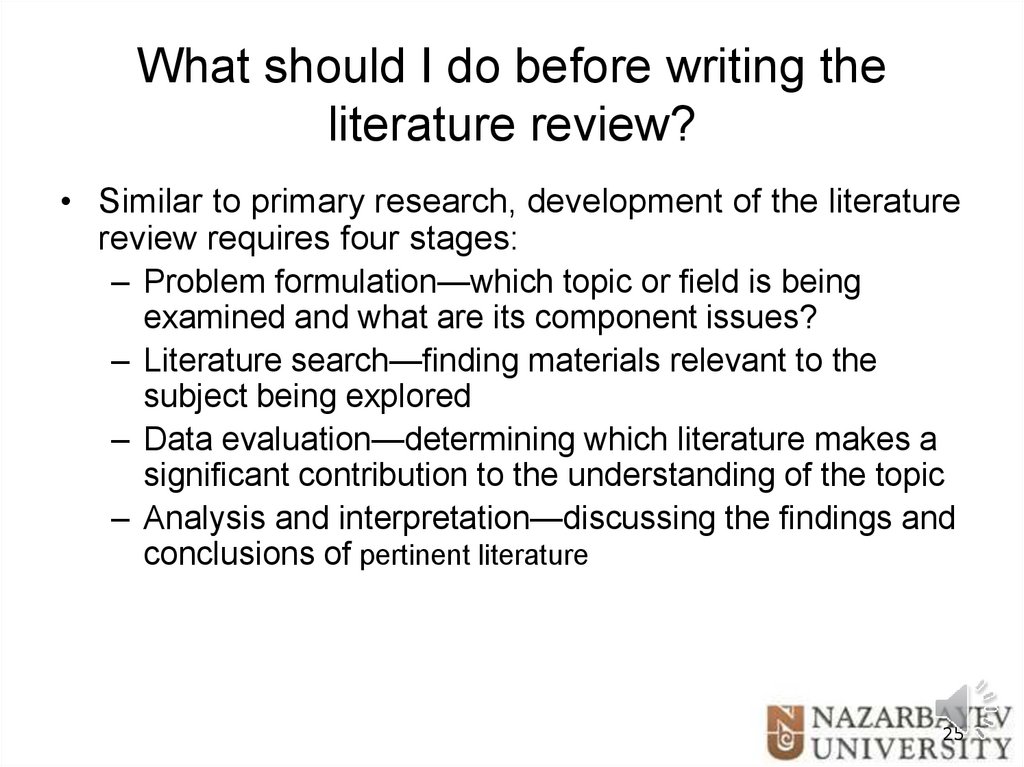













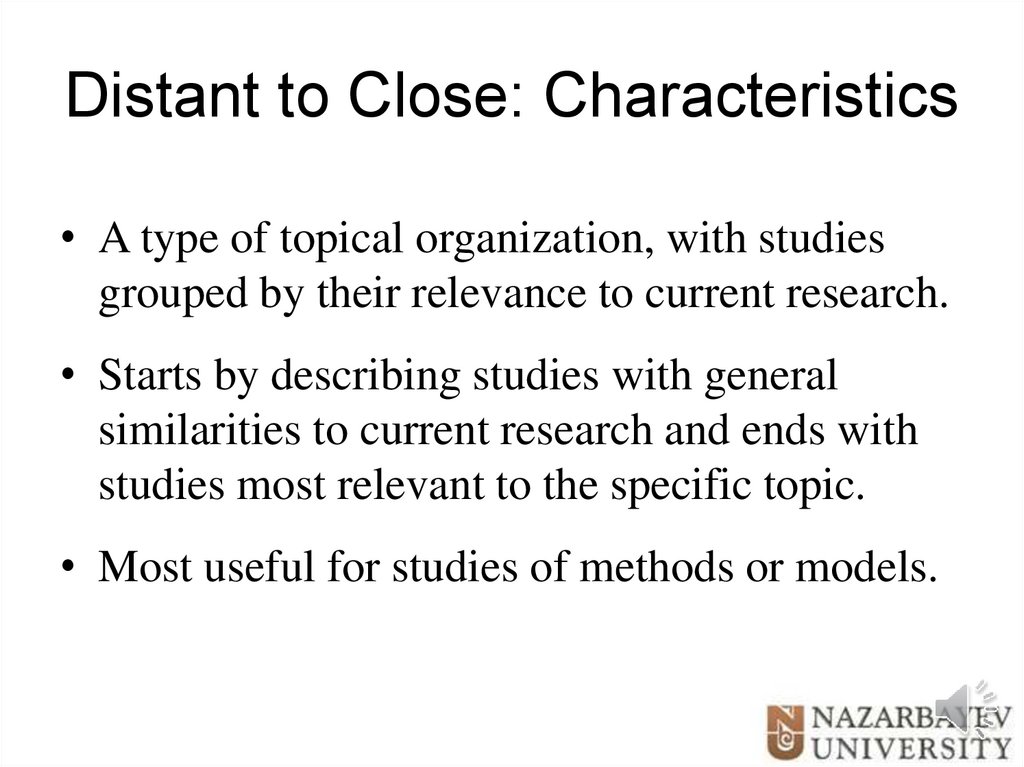

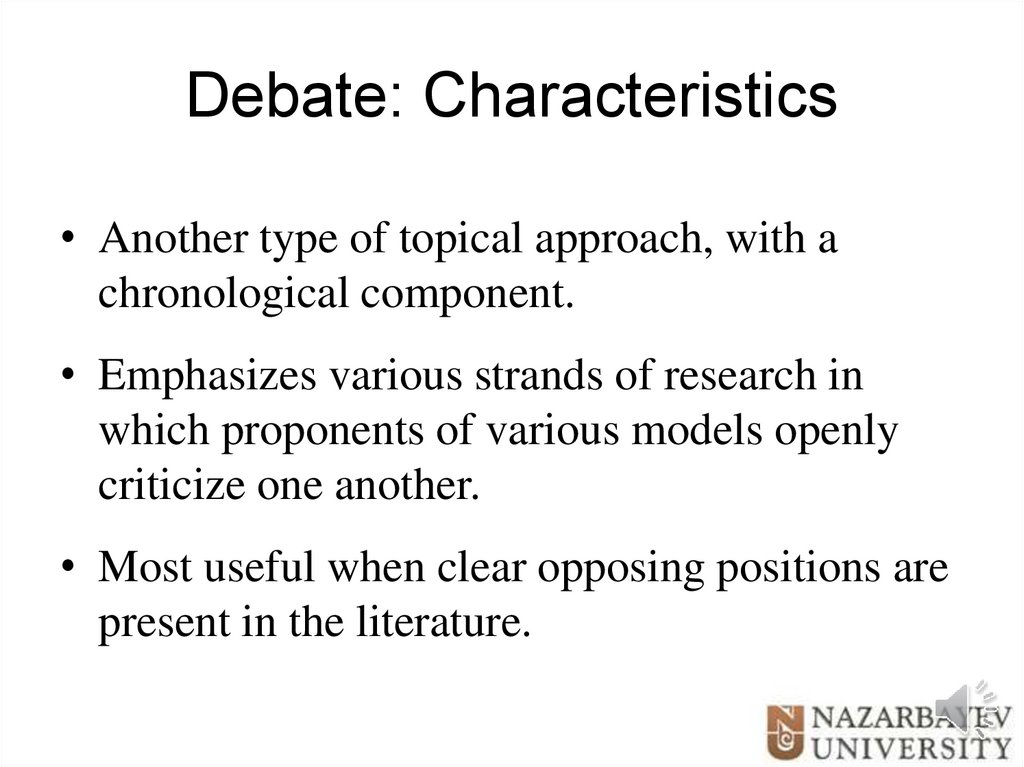
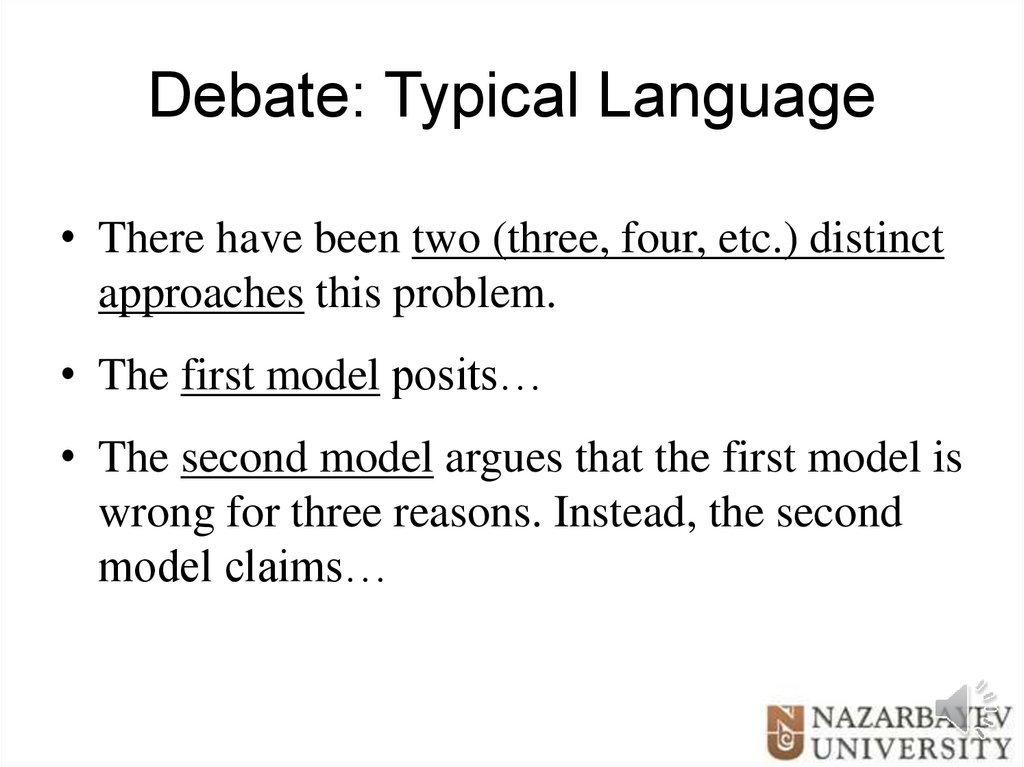
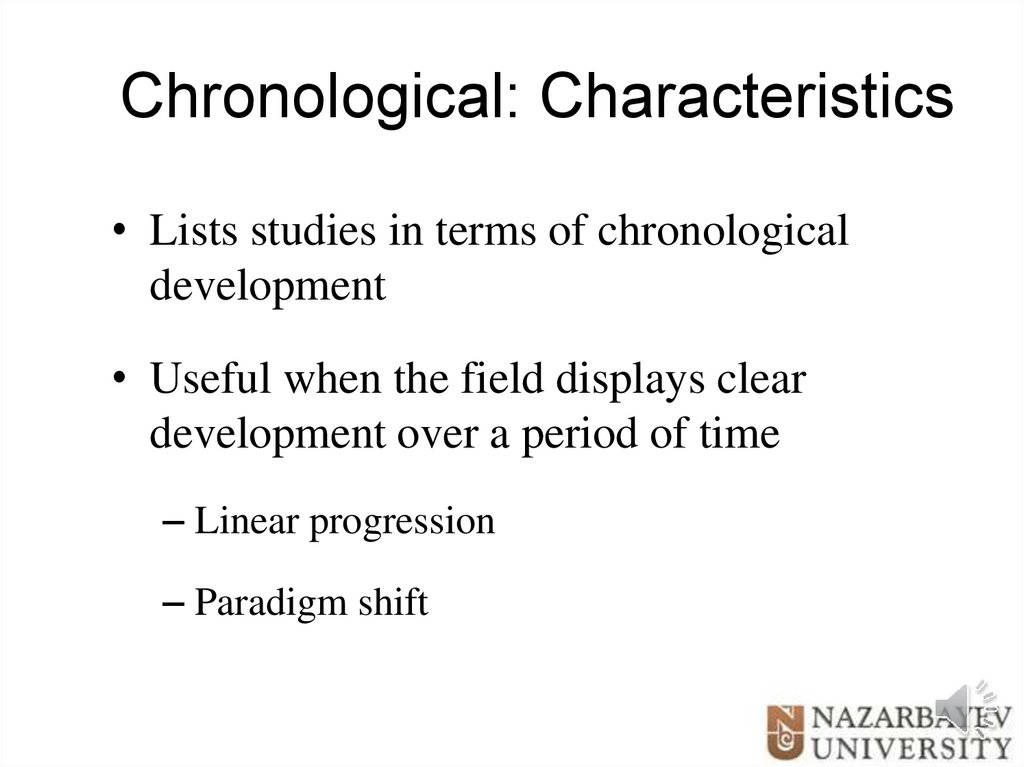



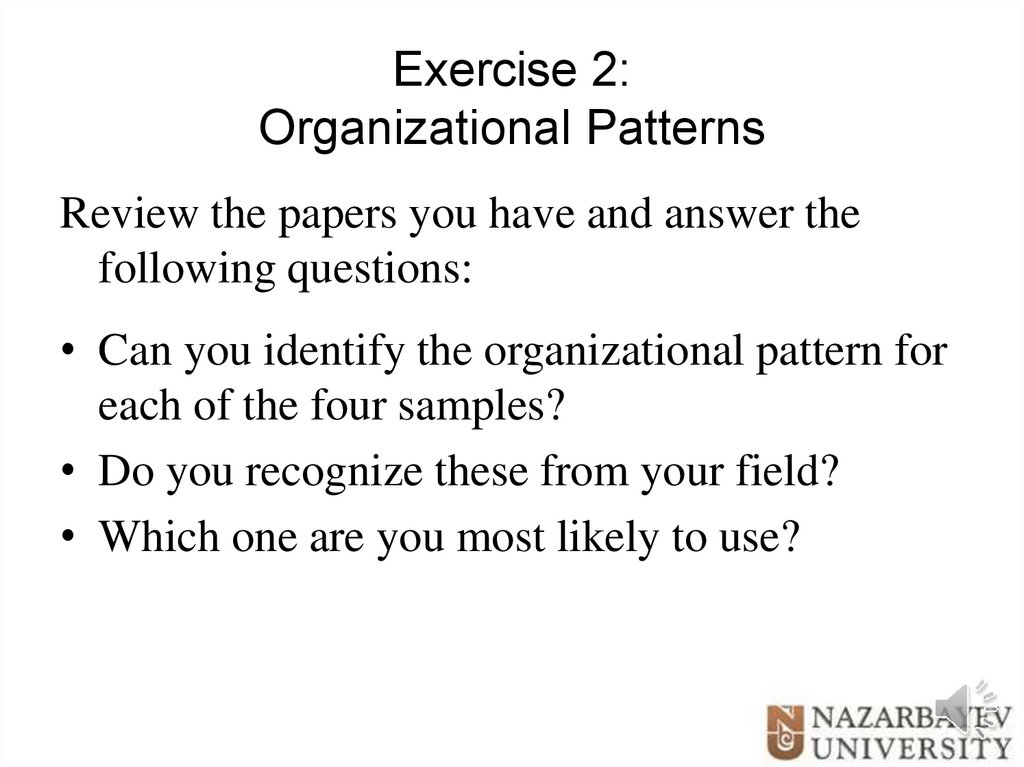










 literature
literature








